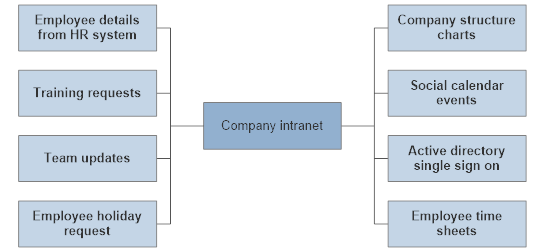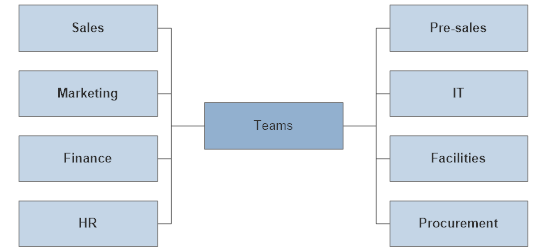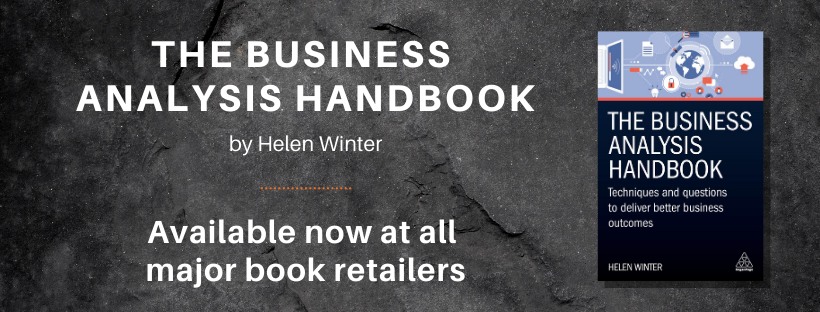
When is the technique applicable
Mind maps are a visual picture for capturing information that relates to a central topic.
Examples of situations where mind maps can be useful are:
- New to the subject area and wish to understand more about it
- Have some gaps in knowledge of the subject area
- To help with identifying scenarios / concepts in meetings or workshops
- To demonstrate pictorially the knowledge gathered
- To plan out the different tasks required
- To organise thoughts or brainstorm ideas with others
How to use/apply it
Mind maps can be put together individually or collaboratively. It can sometimes be useful to start this off as an individual exercise if some information is already known and then use as a communication tool with others to help fill in the gaps, add more detail or to gain consensus.
The mind map starts out with a centralised concept and then branches out into related subject areas. This can then be extended outwards to provide more related information to each subject area. The information captured each time tends to brief using just a couple of key words.
There is no set format for a mind map as the idea is for it to be flexible enough to mimic thought patterns. Words, colours or even pictures can be applied to it. They can be done on paper or specialised software.
They are simple and quick to put together. They tend not to be an end deliverable but provide a useful tool as part of the process for gathering and analysing information.
Worked examples
Example 1 – Brainstorming of ideas for a company intranet

Example 2 – Ideas for gaining an agreement on tasks required for a peer review

Example 3 – Fact finding what teams are involved in a process

Thoughts? Questions? Please share in the comments.


I really like mind maps and I really value their use. I have found them useful when starting on a new project when you are receiving lots of information which you want to retain but don’t know what to do with… yet.
This can then form the start of a plan but also allows you to keep in view items that are relevant but don’t fall neatly into a plan.
I would only add that they are a great opportunity to make it more visual. This is more fun and more engaging! I will use simple things like dollar signs signifying money or clocks indicating time.
Thanks for your feedback Alex. I can’t remember when I discovered them but certainly is so useful when beginning new projects and so easy to use.
Hi Helen, I’ve used mind maps for years and swear by them. What tool(s) do you use for electronic mind maps? At work I use Visio and at home I’ve been trialing Coggle. Coggle is great but the free trial version is limiting and I think the monthly subscription is too much. I don’t mind paying for a good solution as I use them a lot but I also don’t want to be stuck with an expensive monthly expense. Any ideas?
Hi Jon,
At home I’ve been using SmartDraw. It does allow mind maps but not as pretty as Visio. It’s fairly good with all of the other types of diagrams. I don’t remember it being expensive.